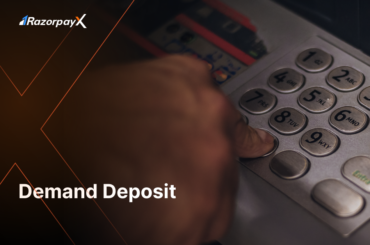Over the last decade, technology has made giant leaps. Today, consumers are able to make payments for a ride even before they reach their destination or pay their utility bills without putting a foot outside their home.
During 2020 and 2021, the pandemic further accelerated digitisation, which led companies to find innovative ways to achieve execution speed, which seemed impossible a few years ago.
Today, instant payment systems have become an essential part of our daily life. But have you ever wondered what is happening at the back of these digital transactions? The simple answer is – embedded finance. Now, the next big question is – what is embedded finance? Read on to find out.
What is embedded finance?
Embedded finance refers to the impeccable integration of financial services into non-financial services. It is designed to streamline financial processes for consumers and offer a better user experience, wherein they can access what they need when they need it.
For instance, embedded finance enables customers to make a purchase and get credit at one place instead of going to a physical bank to apply for credit and then make the purchase. Basically, customer-facing digital platforms leverage the embedded finance technology to graft financial services into their own offerings.
According to studies, the embedded finance revenues in India will increase from US$4,801.8 million in 2022 to reach US$21,127.5 million by 2029. In other words, the industry is slated to grow at a staggering rate, driven by the increasing availability of financial services APIs. A huge addressable market opportunity will result in significant revenue growth for embedded finance players.
Related Read: A Beginner’s Guide to Embedded Payments
Examples of embedded finance
Embedded finance may be a completely new concept for some people; therefore today we’ll take a look at the examples of embedded finance that will transform the near future:
-
Embedded Payments
With Embedded Payments, consumers make payments with the touch of a button. It allows them to make payments without switching between apps, which speeds up the checkout and payment settlement processes, thus offering an excellent user experience. Many food-delivery apps and payroll automation software offer embedded payments.
-
Embedded cards
Embedded cards can be seen as a substitute for credit cards and debit cards for regular spends between a user and their vendor(s). It allows a user to transfer funds to cards electronically and make purchases limited to the value of the transferred funds, which may also be activated. These cards are more secure and cost-effective than traditional cards. Some examples of these cards include smart cards, expense cards, virtual cards, corporate cards etc.
For example, Corporate credit Cards by RazorpayX offer’s payments that are secure as all the information is encrypted. They also allow faster processing and are more cost-effective than traditional cards.
-
Embedded lending
Today, consumers don’t need to run to banks for a loan. Many non-financial firms have ventured into the financial segment to enable users to get credit right at the point of purchase. It eliminates the need for third parties, lengthy processes and excessive paperwork.
For example, Instant Settlements for Marketplace Sellers is an example of embedded lending through which marketplace sellers can get access to credit within seconds, based on their sales data fetched directly from the marketplace platform with safe and secure APIs.
-
Embedded investments
A large number of investors may not be aware of secure financial investments. However, it is an essential aspect of the effective management of money. Hence, it is sensible to make embedded investments as it simplifies the investment process by offering a single platform for investing and managing money. It allows users to put money in different financial instruments without leaving the platform, which is a safety measure.
-
Embedded Insurance
People are becoming increasingly tech-savvy, so technical integration has become an indispensable need for selling insurance policies. Embedded insurance is a much better option than the complicated traditional process of buying insurance plans. It allows insurance companies to approach customers through a secure platform that they are more likely to trust.
-
Embedded banking
Embedded banking is the process of integrating financial solutions with a business’ platform or app through the use of APIs. It works as an umbrella term, encompassing different types of financial services, including payments, lending, wearables, contactless payments, card issuing, vIBANs, and bank transfers.
This allows companies to benefit from having integrated financial solutions on their platform or app without having to hire an entire team to implement it.
Advantages of embedded finance
There are several advantages for different stakeholders associated with the embedded finance industry – digital platforms, financial institutions and end-users.
Digital Platforms
- It boosts their (digital platforms) average order value, customer retention, and customer lifetime value, thus resulting in increased revenue.
- It unlocks an alternate source of income in the form of revenue sharing without undertaking any of the financial liabilities.
- A digital platform can beat the competition by adding financial services to its product offering.
- It helps the platform capture valuable customer data that can be useful in deciphering their purchasing behaviour, which can be leveraged in various ways.
Financial Institutions
- They (financial institutions) can leverage the distribution capabilities of the digital platforms to access a large pool of borrower data, which can be used to offer tailor-made financial solutions to potential borrowers.
- It results in improved underwriting and efficient credit lifecycle management, thus boosting their margins.
End-users
- They (end-users) get access to an array of accessible, flexible, and more affordable financial services.
- They are able to avail customized financial solutions that fit their requirements perfectly.
- It results in an improved end-user experience on the platform.
Conclusion
Embedded finance is propelling companies to change the way they do their business because they have no other options but to join hands and leverage it to remain dominant in the market. Besides, it offers so much convenience and ease of access, which is too difficult to ignore in a world where transactions are increasingly becoming digital. The consumers or end-users are the biggest beneficiaries of embedded finance as it unlocks a whole bunch of affordable, customised and easy-to-access financial services for them.





